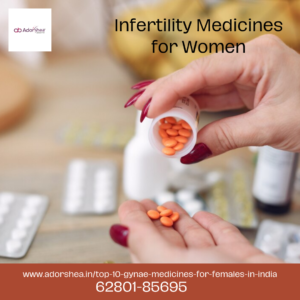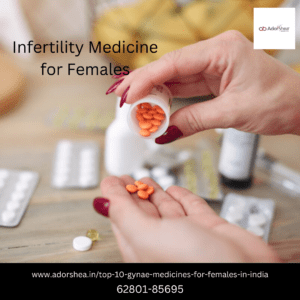Embarking on the challenging journey of overcoming infertility often involves a multifaceted approach, with fertility drugs for females serving as a crucial component. The efficacy of these medications is not only influenced by physiological factors but also by the lifestyle choices individuals make. This comprehensive exploration aims to unravel the intricate relationship between lifestyle factors and the effectiveness of infertility drugs for female, shedding light on the broader context of fertility drugs and fertility tablets for females.
Understanding Infertility Drugs for Females:
Infertility drugs tailored for females play a pivotal role in addressing a spectrum of reproductive challenges. From irregular ovulation patterns to hormonal imbalances, these medications, commonly referred to as fertility drugs, are designed to regulate and stimulate reproductive processes. The primary goal is to create an optimal environment for successful conception. In the realm of female fertility, these drugs act as catalysts, enhancing ovulation and increasing the likelihood of a successful pregnancy.
The Role of Lifestyle Factors:
Lifestyle factors encompass a wide array of choices, each holding potential implications for fertility. Diet, exercise, stress management, sleep patterns, and overall well-being all contribute to the complex interplay between lifestyle and fertility outcomes. Understanding how these factors impact the efficacy of infertility drugs is crucial for individuals navigating the intricate path to parenthood.
Nutrition and Fertility:
A well-balanced diet is foundational to overall health, and its impact on fertility cannot be overstated. Nutrient-rich foods, including those abundant in folic acid, iron, and antioxidants, contribute to reproductive health. For females using infertility drugs, aligning their diet with nutritional requirements during this critical period can positively influence the effectiveness of the medications.
Exercise and Physical Activity:
Regular physical activity has been linked to improved fertility outcomes. Exercise regulates hormones, helps manage weight, and reduces stress—factors that significantly influence the effectiveness of infertility drugs. Striking a balance in exercise routines is crucial, as excessive exercise may have unintended effects on fertility.
Weight Management:
Maintaining a healthy weight is paramount for fertility. Both underweight and overweight conditions can disrupt hormonal balance and interfere with the ovulatory process. Infertility drugs for females tend to be more effective when complemented by a stable and healthy body weight. Weight management, achieved through a combination of diet and exercise, is a key aspect of optimizing fertility outcomes.
Stress and Emotional Well-being:
Chronic stress is a well-known contributor to hormonal imbalances, potentially hindering the effectiveness of fertility drugs. Incorporating stress-reduction techniques, such as mindfulness, meditation, or yoga, into one’s lifestyle can create a more conducive environment for fertility treatments. Emotional well-being is integral to the overall success of infertility interventions.
Sleep Hygiene:
The significance of quality sleep cannot be overstressed, especially in the realm of fertility. Disruptions in sleep patterns can negatively impact reproductive hormones and compromise the effectiveness of infertility drugs. Prioritizing and ensuring restful sleep is a fundamental aspect of optimizing fertility outcomes.
Fertility Tablets for Females:
In addition to traditional infertility medications, fertility tablets for females have gained popularity as complementary supplements to support reproductive health. These tablets often contain a blend of vitamins, minerals, and herbal extracts designed to enhance fertility. While not intended as replacements for prescribed infertility drugs, fertility tablets can play a supportive role in a holistic approach to improving reproductive outcomes. Their inclusion in a comprehensive fertility strategy may provide additional nutritional support.
Conclusion:
As individuals navigate the intricate landscape of infertility and engage with medications such as fertility drugs for females, the influence of lifestyle factors cannot be ignored. The efficacy of infertility drugs for female is intertwined with choices related to nutrition, exercise, weight management, stress levels, and sleep patterns. Recognizing the interconnectedness of these factors and adopting a comprehensive lifestyle approach, supplemented by fertility tablets for females, can significantly enhance the chances of successful conception.
Consulting with healthcare professionals, including fertility specialists and lifestyle experts, becomes imperative to formulate a personalized and informed strategy for optimizing fertility outcomes. Embracing a holistic lifestyle that nurtures overall well-being empowers individuals on their journey to parenthood. By recognizing the profound impact of lifestyle factors on fertility, individuals can actively participate in the process, contributing to the realization of their dream of building a family.










